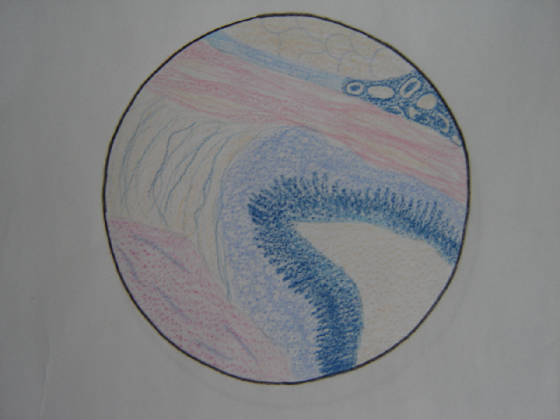|
Cartilage is a strong, opaque, flexible and resilient connective tissue covered by a dense membrane
called the perichondrium. It contains no blood vessels or nerves and is found in two forms: temporary and permanent. Temporary
cartilage occurs in mammal embryos during maturation before birth. It acts as a model for the skeleton and is eventually replaced
by bone during growth. Permanent cartilage can be described in three ways. Firstly, hyaline cartilage is a semi-transparent,
bluish-white form of permanent cartilage. It is very strong, yet flexible and functions to reduce friction at joints due to
its smooth surface which allows for sliding; for movement; for support, in such places as the trachea; and growth, as it is
responsible for the growth of bones in the neck. Secondly, white fibrocartilage acts as a shock absorber, between vertebrae,
during movements such as walking or running; provides support without hindering movement; and deepens sockets to decrease
dislocation. Lastly, elastic cartilage, which is similar to hyaline cartilage, is found in the ear lobe, the epiglottis and
some parts of the larynx. It functions to maintain shape and flexibility, and strengthens and supports the structures
it is found in.
|






